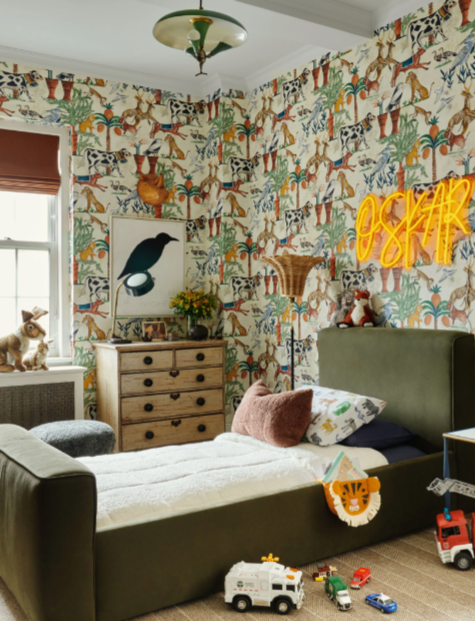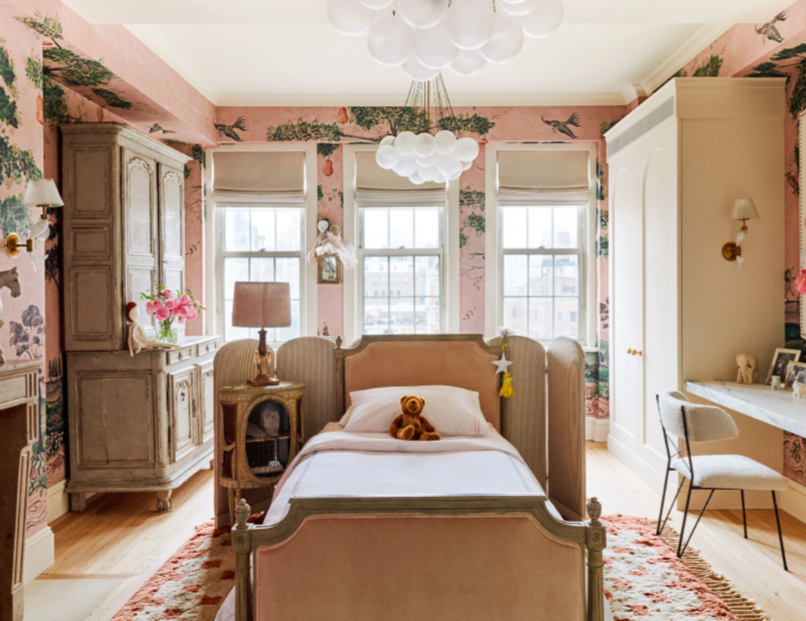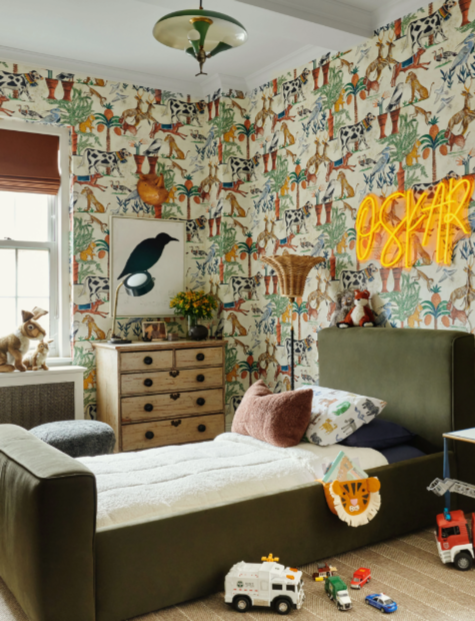
How to Design Kids’ Bedrooms That Feel Unique Yet Cohesive
Designing kids’ bedrooms is a delicate balance—each child’s space should feel personal and reflective of their personality, while still connecting to the overall design of the home (and, if you have multiple children, to each other).
These two children’s bedrooms are perfect examples of how to create distinct spaces that still feel cohesive. Let’s break down the details that make them work.


First Impressions: Why These Rooms Feel Designed, Not Just Decorated
At first glance, these rooms feel intentional, stylish, and most importantly—like places a child would love to spend time in. But what makes them stand out?
Individual Personality in Each Room – While both spaces share common design threads, they each have distinct color palettes, textures, and themes that reflect the personality of the child who lives there.
A Cohesive Connection – Despite their differences, the rooms don’t clash. They feel like they belong in the same home thanks to shared design elements like material choices, furniture styles, or complementary color tones.
Function Meets Fun – These rooms aren’t just about looking good; they’re designed to work for a child’s lifestyle, from sleep to play and storage.
Let’s break them down individually while looking at what ties them together.
Room 1: A Soft, Serene Space That Feels Dreamy Yet Playful

Image Credit: Nate Berkus
This room is a beautiful balance of calm and creativity. Here’s why it works so well:
A Soft, Muted Color Palette – Gentle, neutral tones create a soothing environment, making it a perfect retreat for winding down at night.
Layered Textures for Warmth – Plush bedding, soft rugs, and subtle wallpaper or textiles add depth and make the space feel cozy without overwhelming the senses.
Whimsical Touches – Whether it’s delicate wall art, charming bedding details, or unique furniture, there are little moments of magic that make this feel like a child’s space.
Takeaway: A muted color palette paired with layers of texture creates a serene yet playful space that feels both stylish and child-friendly.
Room 2: A Bold, Fun Space with Personality and Energy

In contrast to the first room’s softness, this space embraces bold choices that still feel curated. Here’s what makes it work:
A Stronger Color Palette That Still Feels Cohesive – Darker tones or vibrant accents bring energy to the space while still tying into the home’s overall aesthetic.
Statement Furniture & Playful Details – Whether it’s a standout bed frame, playful shelving, or fun decor, this room leans into personality while maintaining structure.
Graphic Patterns or Artwork That Adds Energy – Bold prints, wallpaper, or unique wall decor bring a sense of adventure without making the space feel chaotic.
Takeaway: A more expressive color palette, statement furniture, and graphic patterns create a space that feels bold yet balanced.
How These Two Rooms Connect While Remaining Unique
Even though these bedrooms have their own distinct personalities, they still speak to each other beautifully. Here’s why:
A Common Thread in Materials & Textures – The use of soft textiles, high-quality furniture, and layered details ensures both rooms feel connected.
A Shared Sense of Playfulness – While one is softer and the other is bolder, both spaces include fun, child-friendly elements that bring joy.
A Balanced Approach to Color – While the color palettes are different, they complement each other rather than compete, creating harmony in the home.
Takeaway: The best way to design multiple kids' rooms in one home is to allow each space to have its own voice while maintaining subtle connections in materials, furniture styles, or playful details.
How to Apply These Ideas to Your Own Home
If you’re designing multiple kids' rooms and want them to feel both unique and cohesive, here’s your blueprint:
✔ Give Each Room Its Own Personality – Start with what the child loves, whether that’s soft neutrals or bold patterns.
✔ Use Common Design Threads – Keep some elements consistent, like furniture styles, bedding textures, or a shared material palette.
✔ Balance Playfulness with Timelessness – Fun details should feel thoughtful rather than overly themed, allowing the space to grow with the child.
✔ Avoid a Matchy-Matchy Look – It’s okay for rooms to be different! As long as there’s a subtle connection, they’ll still feel cohesive within the home.
Once you start thinking about kids’ rooms as a blend of individuality and connection, the design process becomes much more intentional. Great design isn’t just about making a space look good—it’s about making it feel right for the people who live in it.

